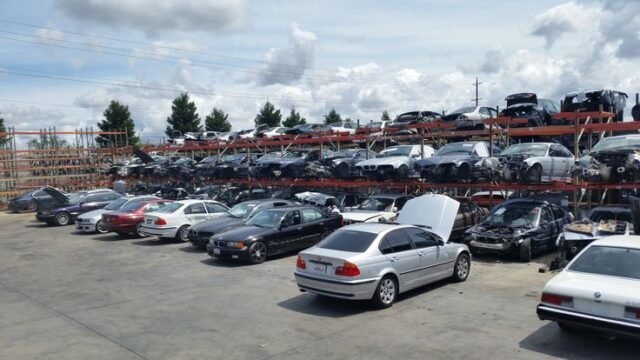There comes a time when every vehicle reaches the end of its lifespan. If your car no longer meets the standards required for road use, you may be wondering what to do with it. Selling a car that is not roadworthy is different from selling one in regular condition, but it is not impossible. In many parts of Australia, there are buyers interested in vehicles of all types, including those that cannot be driven.
This guide explains each step to take when preparing, listing, and transferring ownership of a car that is no longer fit for the road.
Understand What Makes a Car Unroadworthy
Before anything else, it is important to confirm that your car is truly unroadworthy. A car is considered not safe for the road when it fails to meet the legal safety standards outlined by the state or territory in which it is registered.
Common reasons include:
- Faulty brakes or steering
- Damaged chassis or rust in critical areas
- Faulty lights or non-functional indicators
- Worn tyres below legal tread depth
- Severe oil leaks or engine trouble
- Non-operational seatbelts or airbags
If your car fails a roadworthy inspection or cannot pass a safety certificate check, it cannot be legally driven on public roads unless repaired.
Remove Personal Items and Clean the Vehicle
Even if the car cannot be driven, it should still be cleaned out. Remove all personal items such as paperwork, electronic devices, and accessories. While buyers of unroadworthy vehicles may not expect spotless interiors, a clean vehicle still leaves a better impression.
Check the glove box, boot, centre console, and under seats for anything valuable or personal. Remove your registration label if still attached.
Find the Right Type of Buyer
Not all buyers are interested in cars that do not run. For this type of vehicle, the best choices are:
- Wreckers or dismantlers
- Metal recyclers
- Cash-for-cars businesses
- Auto parts buyers
These buyers typically assess the car based on its weight, brand, and available parts. They may offer to collect the car from your location. This can be helpful when the vehicle cannot be driven or towed easily by the owner.
For more details, visit: https://www.webuycarsforcash.com.au/cash-for-cars-manly/
Check Your Paperwork
You will still need to provide proof of ownership before selling the car. This usually includes:
- Registration certificate (even if expired)
- Your identification (driver’s licence or passport)
- Any service history or manuals, if available
If the car is still registered, you may also need to submit a notice of disposal to the relevant transport authority after the sale is complete.
In New South Wales, for example, owners must notify Transport for NSW when a car changes hands—even if it is not roadworthy.
Consider Removing the Number Plates
If your car is no longer registered, the plates should be returned to the local transport office. In some cases, buyers may request that you do this before they accept the vehicle. This ensures the vehicle cannot be used on the road again unless legally re-registered.
If the car is still registered, you can apply for a refund of the unused registration period once the plates are returned.
Get Quotes from Multiple Buyers
Before accepting any offer, it is a good idea to get multiple quotes. While the car may not run, the value of its parts or metal can vary between buyers. Make sure to describe the vehicle clearly, including:
- Make and model
- Year of manufacture
- What parts are missing, if any
- Current location
- Whether the car can be rolled or needs lifting
Taking recent photos can also help the buyer decide what they can offer.
Arrange Pickup or Drop-off
Once a buyer has been selected, arrange a collection time. In most cases involving non-running cars, the buyer will come with a tow truck or tilt tray. If your location is difficult to access, mention that beforehand so the correct equipment is brought.
Make sure you are present during the pickup, or leave a signed note if you cannot be there. Remove all keys and documents from the car unless instructed otherwise.
Finalise the Sale and Notify Authorities
Once the car is picked up, get a written receipt or invoice. This should include:
- Date of sale
- Name and contact of the buyer
- Amount paid (if any)
- Vehicle details (VIN, registration number, make, and model)
Then, submit the change of ownership or disposal form to your state’s road authority. This removes any responsibility for traffic fines, tolls, or accidents linked to the vehicle.
Related Example – Car Disposal Services in Action
There are businesses across Australia that focus on collecting and processing unroadworthy vehicles. In places like Sydney, services that manage car disposal help owners deal with cars that cannot legally stay on the road. Whether the vehicle has been parked for years, is missing major parts, or has been written off after a crash, these services handle the collection and transfer process with minimal steps for the owner. It is a common option when the car is too damaged to repair or no longer has resale value in the regular market.
Conclusion
Selling a car that is no longer roadworthy requires a different approach compared to selling a regular vehicle. From identifying its condition to choosing the right buyer, each step plays a role in ensuring the process is done correctly and legally.
Always confirm ownership, remove personal belongings, and notify your local authority once the vehicle has been sold or collected. With a clear plan, even an unroadworthy car can still be of use to someone who needs parts or scrap metal.
Letting go of a car in this condition can also clear up space and remove the risk of fines or neighbourhood complaints. Whether it has been sitting unused for years or recently failed inspection, there are still options to part ways with your old vehicle responsibly.






